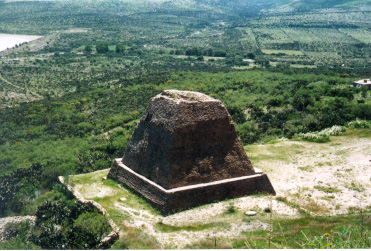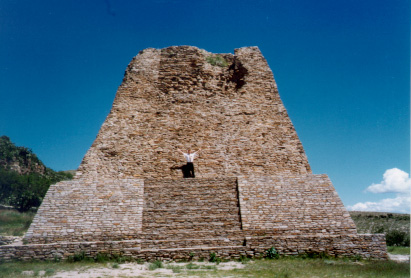
| |

La Quemada is located southwest of the Zacatecas, Zacatecas in northern Mexico. These ruins had there peak activity from 700 to 900 A.D., however they have been around since about 200 A.D.,(the period of the Zapotec.) The majority of the archeaologist's that have studied this site believe it to be the location of the Seven Cites of Cibola, the place of origin of the Aztec's, before traveling north to their homeland. Although well thought out, I firmly believe that the legendary "City of Cibola", if indeed it did exist, was farther north and closer to their homeland. As you may have read on our home page, we as well as many other scholar's place the Aztec homeland in Utah. (Part of my theory is that when the gold was sent out of Tenochtitlan, the trip north would have been just another journey back to their homeland.) The Altars Altars were a very important aspect of daily life for the Aztec's. It is what made the world go round. Archeologist's have found thousands of altar's in Tenochtitlan, so if this were an Aztec locale, there would be no confusion as to why these altars are found here.
 | |
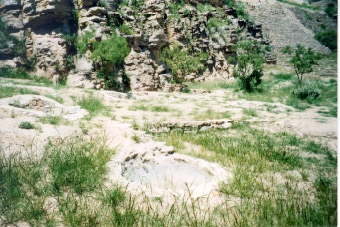 The Smelting Pots
The Smelting Pots
On our home page we display a drawing, from one of the many codices, that depict Spaniards smelting gold in a smelting pot exactly like these. There were seven pot's located at the base of the great stairway, pictured below. Due to the fact that this was a strategic trading outlet, the occupants could have melted ores or made weapons in them. 
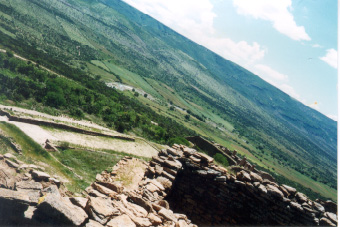 The Ball Court
The Ball Court
The ball game was also an integral part of the Aztec society. It was played socially as a group or privately. The public games were bet on by noblemen, just like we do today, but with goods not money. The players would dress up in their ritual attire, with padding on their elbows, hips and knees. The object of the game was to keep the small rubber ball moving at all times. The ball represented the sun traveling through the heaven's and in order for the sun to continue it's course, thus bringing life, the ball had to be kept in continuos motion. If one team, or if played one on one, a person caused the ball to stop, it cost him a point, until the predetermind points were met. If a person or team managed to get the ball through a small hoop at the top of the court, that team automatically won. This did not happen often however. The loser was willingly sacrificed to the the God's, sometimes the Sun God and often the Rain God, pictured below. This ritual was passed down to them from the Maya the Olmecs and then the Toltecs, of whom the Aztec's highly esteemed. A little side note that the rubber ball was so hard that after the games the players would have to drain their many bruises of blood. 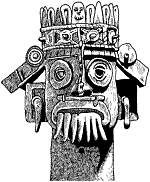 Tlaloc, the rain God |
